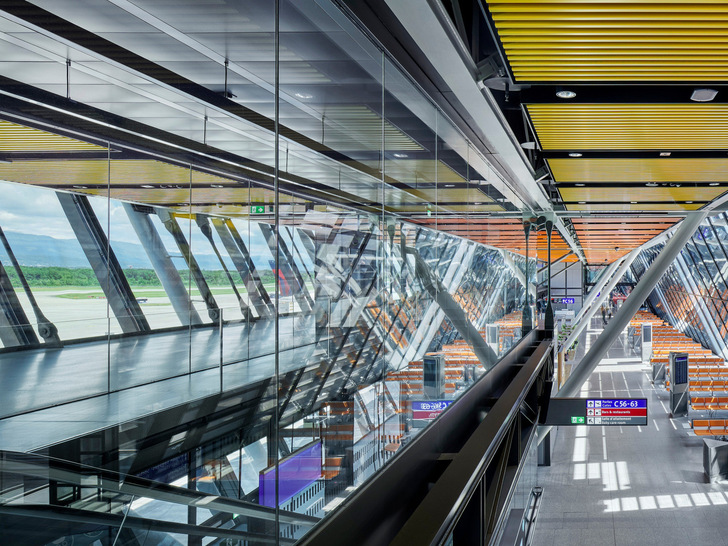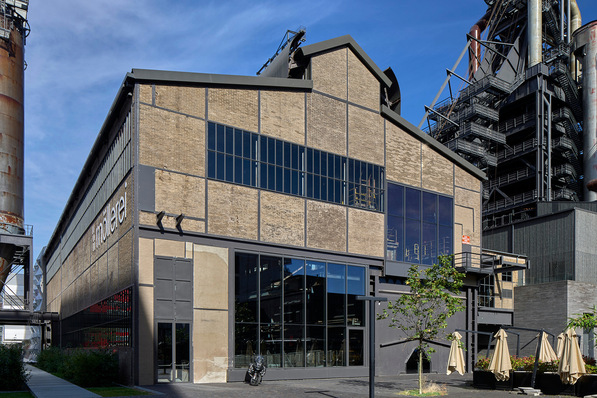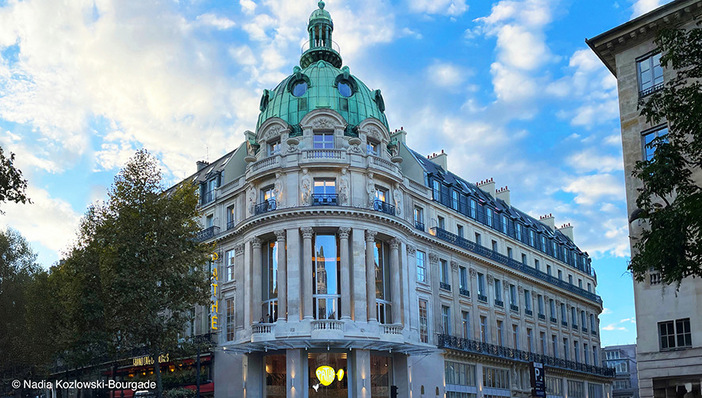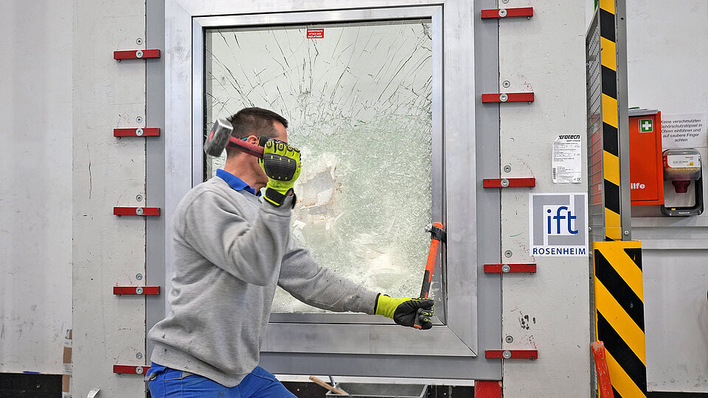The "Aile Est" airport terminal at Genève Aéroport combines state-of-the-art passenger handling with high-quality architecture. All common areas and walkways were realised with profile systems from Forster. Their flexible design options fulfil the particularly high fire protection and safety requirements for airport buildings.
In addition to the twelve gates, the new terminal also includes two business lounges, waiting areas, customs control and shops. The new building, which is 520 metres long and 20 metres wide, has fully glazed main facades with an inclination of 26 degrees.
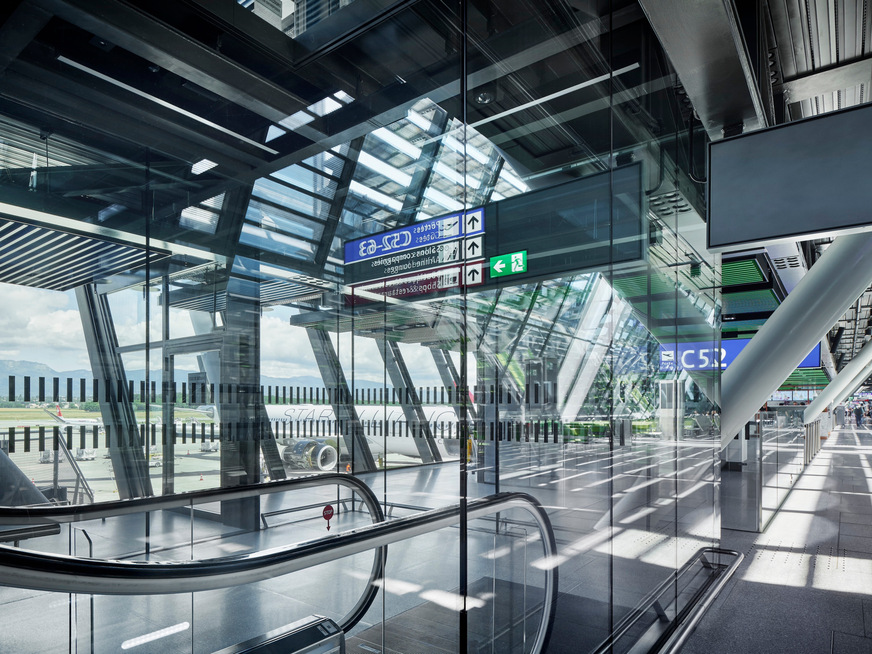
Damian Poffet
See also: Trosifol SC Monolayer keeps airport terminal quiet
The geometry of the structure, which is a parallelogram in cross-section, lends the terminal building lightness and elegance. The inclined glass facades emphasise the floating character of the terminal and offer passengers an unobstructed view of the runway and the Jura Mountains.
Glazing up to 4 metres high
The construction in the form of an exoskeleton, i.e. a supporting structure outside the building, allowed the interior spaces to be designed to be flexible and airy.
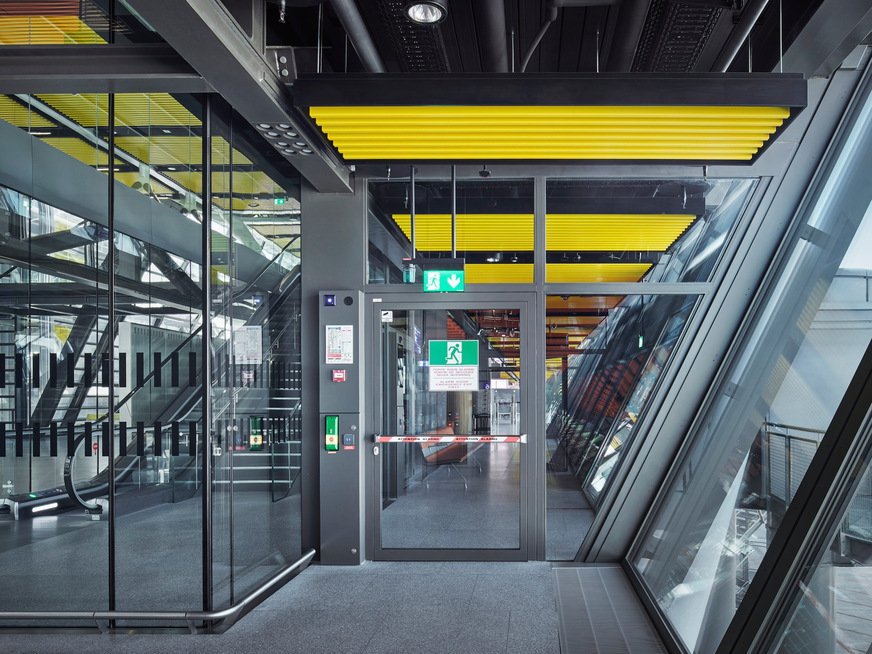
Damian Poffet
Glass walls, which serve to direct the flow of people, provide plenty of daylight inside the building and facilitate orientation. The balustrades of the moving walkways and numerous doors are also made of glass and support the open, cheerful character of the architecture.
The glazing inside the building, which is up to 4 metres high, is a key element of the interior quality, which impresses with its spaciousness and exciting visual references despite the narrow building structure.
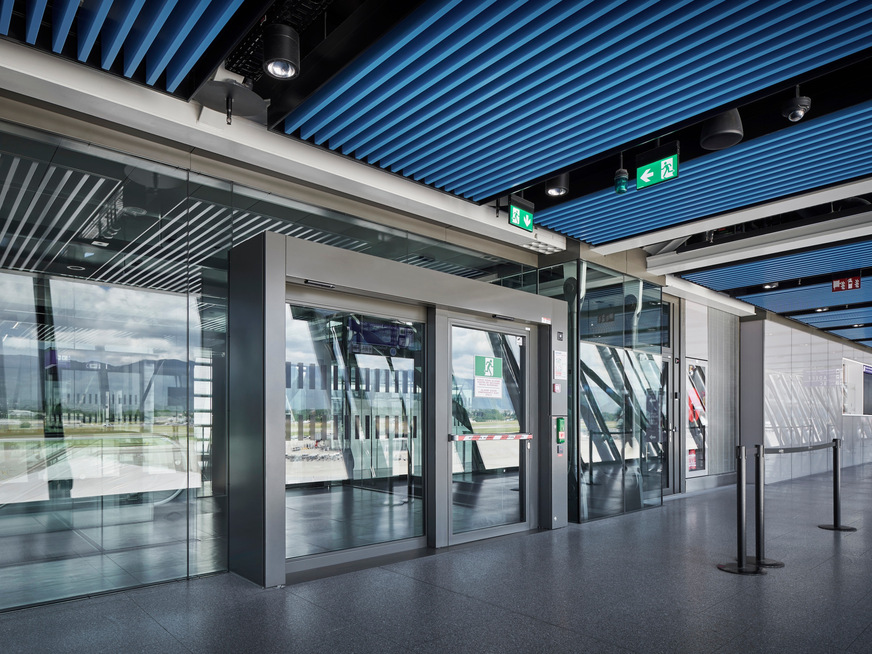
Damian Poffet
The forster fuego light profile system was used for the glass surfaces and the fire protection bulkheads required for large-scale projects of this kind. This enables the design of fixed glazing with integrated sliding doors, which guarantee horizontal and vertical escape routes in the event of a fire in accordance with the fire protection guidelines of the AEAI (Association des établissements cantonaux d'assurance incendie).
Escape route: fire protection sliding doors in use
The forster fuego light EI30 fire protection sliding door with escape route function scores highly as an architecturally appealing solution in the east wing, as it does not require additional escape doors.
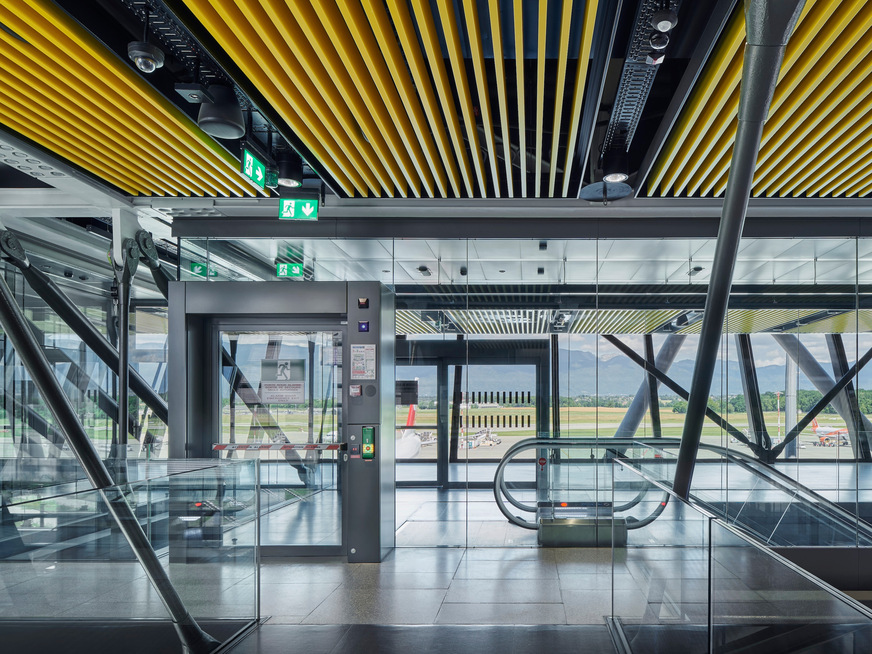
Damian Poffet
This is because the fire protection doors combine the sliding and pivoting functions in one element. The panic push bars trigger the opening of the swing doors in accordance with EN1125.
Also interesting: Heavydrive simulates large-scale installation for major construction site
These so-called swing-out doors were specially designed and dimensioned for the Geneva airport terminal to provide optimum conditions for a quick escape in the event of a fire.
In addition, the doors are equipped with a complex electronic access control system in accordance with the requirements of an international airport.
EI30 glazing without intermediate mullions
For the "Aile Est" project, the EI30 glazing was designed without high intermediate mullions, including fall protection and 90° corners. The flush-fitting elements offer maximum safety while allowing maximum daylight to enter the building.
Another challenge in this demanding project was the tolerances of the building structure, which can be up to 8 cm. The robust Forster profile systems made of 100 % recyclable steel are able to absorb these movements without transferring the loads to the EI elements.







